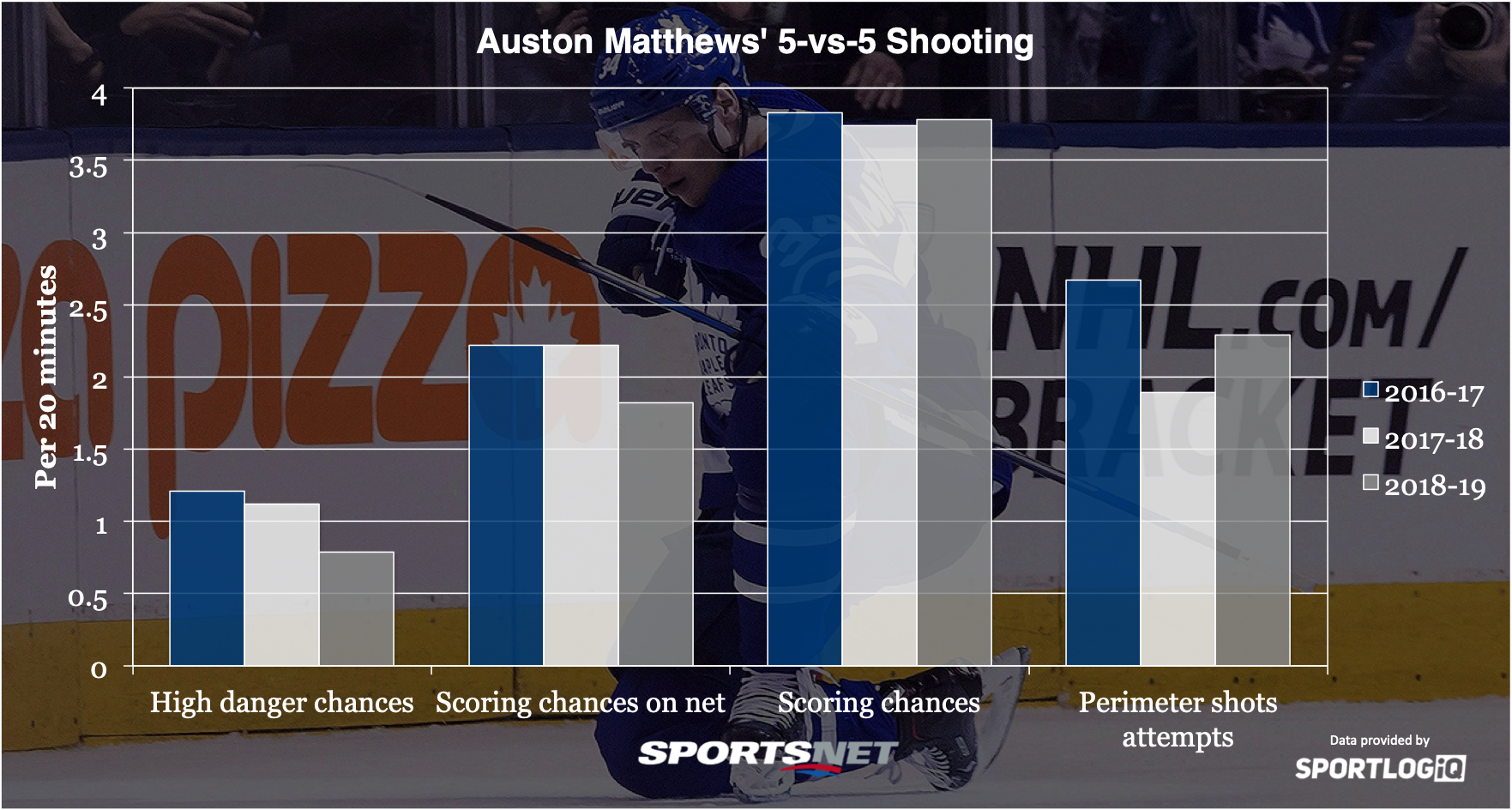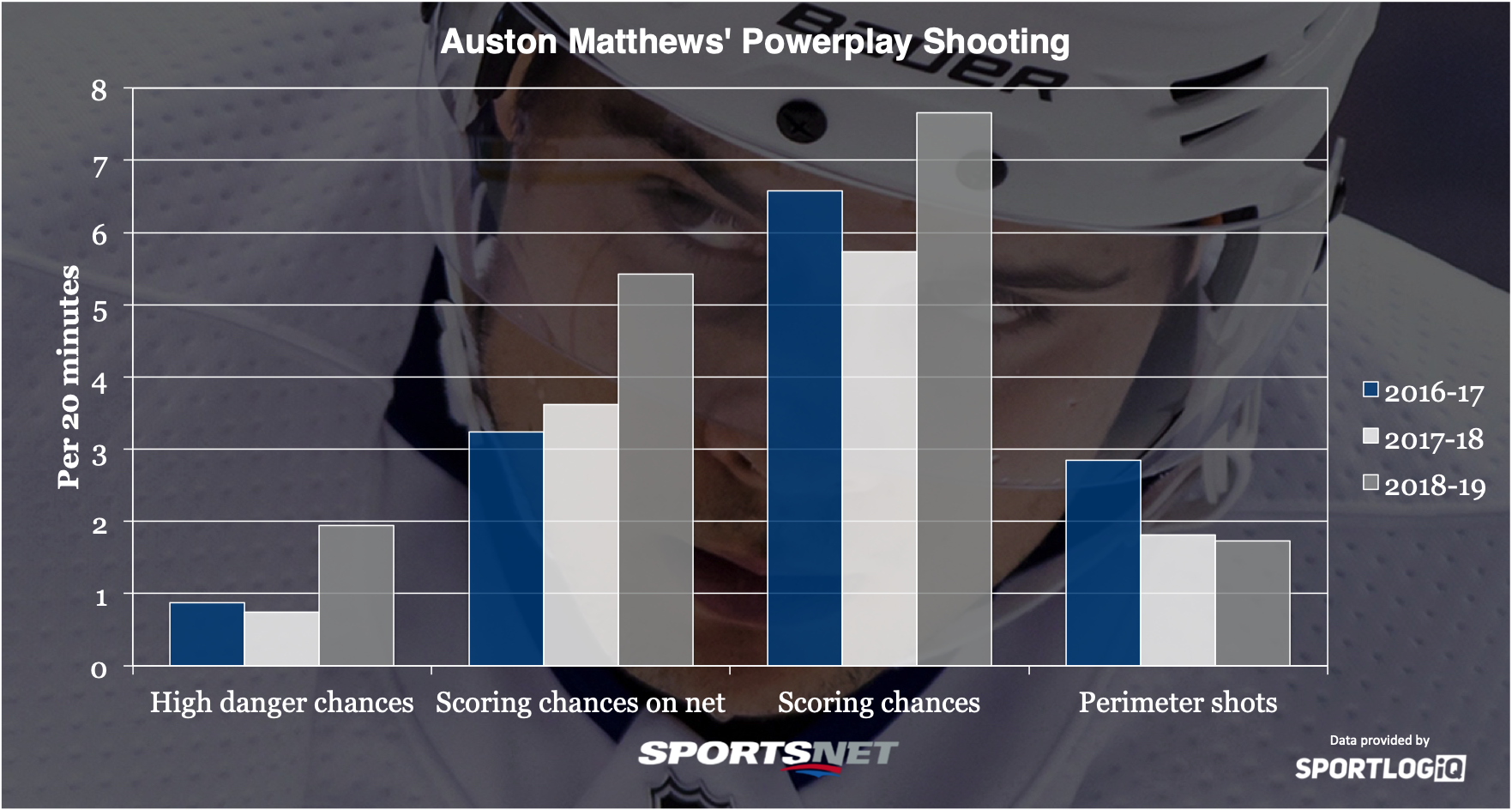On Tuesday Auston Matthews and the Toronto Maple Leafs came to an agreement on a five-year contract extension, which bought up one year of unrestricted free agency and cost the Maple Leafs $11.63 million against the cap, the implications of which you can read about here in Elliotte Friedman’s 31 Thoughts.
An injury has sort of obscured the fact Matthews has been in the midst of another career year. He’s on an 82-game pace of 49 goals and 49 assists and has done this despite the fact his most common linemate over the past two seasons missed a good chunk of this season in a contract stalemate, and has struggled upon returning.
Last season injuries hid Matthews’ offensive progression as well, stopping his 45-goal pace at just 34. Multiple injuries in a short time period might be a small concern, but the bigger takeaway of Matthews’ career so far is that despite missing 20 games last season and 14 this season, he’s scored the sixth-most goals in the NHL since he came into the league with 97. Matthews also has the second-most even strength goals in that time with 76 behind only Connor McDavid’s 84, the second-most goals per game played with 0.53 behind Alex Ovechkin’s 0.55, and the most goals per 60 minutes played at 1.78, a hair above Patrick Laine’s 1.76.
Matthews is strong in many facets of the game. I had him ranked as the fifth-most impactful centre in the NHL heading into the season, but it’s the goal scoring that has made him the second-highest paid player in the NHL at just 21 years old.
Matthews broke into the NHL at the same time as Laine and it’s strange to think this generation’s two best goal scorers came from the same draft, but those two are clearly the heir apparents to Ovechkin as the class of the NHL.
Matthews specifically appears to be the best 5-on-5 goal scorer we’ve seen in the NHL since Ovechkin’s prime years, but what’s strange is that Matthews’ numbers this season are somewhat confusing.

In his rookie season Matthews lead the entire NHL in scoring chances and scoring chances on net per 20 minutes at 5-on-5, plus he put the third-most high danger shots on net. Last season he dropped to second in scoring chances and eighth in high danger chances, while this season he’s fifth in scoring chances, 30th in scoring chances on net, and 115th in high danger chances. Despite that, his shooting percentage has increased each year, going from 14.3 per cent, to 18.2 per cent, and 19 per cent in 2018-19.
It’s normal for elite goal scorers to drift further from the net — I’ve written about it before — and most of the NHL’s best goal scorers accomplish their scoring by virtue of having an elite shot. Because of this they don’t always have to find prime scoring positions and therefore they prefer to shoot from the high slot, where there’s more time and space than the highly contested net front area.
However, it’s still strange to see a shooting percentage increase while scoring chance numbers either stay the same or drop, so there’s more to this with Matthews. Not all shots are at 5-on-5, so let’s look at the power play.

Now there is more of the change that’s expected of a player who is increasing his shooting percentage. Matthews is shooting less from the perimeter on the power play than ever and far more from the high danger area. He’s gone from 38th and 24th in scoring chances and scoring chances on net respectively, to fifth and fourth league-wide.
Power play shots have a higher chance of beating goaltenders than 5-on-5 shots, so how much do things other than shot location factor into influencing Matthews’ goal totals? We can break that down too.

Two things jump out right away here: the percentage of Matthews’ chances that occur on power plays has increased a ton, and so has the percentage of his chances that are preceded by a cycle pass.
Nearly twice as many of Matthews’ scoring chances on net are coming on the power play now, up from an average of 18 per cent in his first two seasons to a hair over 30 per cent this season. And while 33 per cent of his scoring chances on net involved pre-shot movement via pass in his first two NHL seasons, this year that total is up over 54 per cent.
Another change is that Matthews is shooting off the rush a bit less often, but considering those rush chances seem to have been replaced by ones that get goaltenders moving side to side, it’s not something I would worry about.
One other takeaway from Matthews’ shooting data is that last season he was a lot more lucky to be shooting at 18.2 per cent than he is to be shooting at 19 per cent this season. He shot the lights out at a pretty unsustainable pace last season while not really improving anywhere, and it caught up to him with a mediocre playoff showing,
This season Matthews is using his teammates more efficiently than ever, while jumping on more rebounds as well and reinventing how he gets his shots off in the process.
Combine all this with having perhaps the most deceptive shot release in the NHL, and you have a player primed to be a generational scorer, who is just now scratching at the surface of getting it done on the power play.
[relatedlinks]








